Tom's Hardware Verdict
The NZXT C series 750W uses a reliable and high performance Seasonic platform. It could have a quieter operation, though, at higher loads.
Pros
- +
Full power at 47 degrees Celsius
- +
Efficient
- +
Good enough performance
- +
Long hold-up time
- +
Low inrush current
- +
Fully modular
- +
Selectable semi-passive operation
- +
Two EPS connectors in the new batch
- +
Nice aesthetics
Cons
- -
Can be noisy under tough conditions
- -
Mediocre transient response at 3.3V
- -
Lower than 70% efficiency with 2% load
- -
Small distance between connectors and in cable caps
Why you can trust Tom's Hardware
The NZXT C750 is an 80 Plus Gold certified power supply with ETA-A and LAMBDA-S efficiency and noise certifications, from Cybenetics. While it isn't among the quietest 750W power supplies, with up to 450W loads, it won't bother users who are sensitive to noise. Nonetheless, the Corsair RM750x and RM750, the Asus ROG Strix 750, and the XPG Core Reactor 750 are more suitable choices for users that set low noise output as priority one. The overall performance is about the same as the Seasonic Focus Plus Gold 750, so it is pretty high. But this is a tough category, so the C750 cannot claim a top place in our best power supplies.
NZXT's C750 is the middle of the C series lineup. We have already evaluated the C850 and the C650, so we had to take a look at the C750 since the 750W category is highly popular among users, because it offers enough power to build a potent gaming system equipped with 8-core Intel or 12-core AMD processors and Nvidia RTX2070/2080 or AMD 5700XT graphics cards. If you plan on using more than one high-end graphics cards, then you should look for a stronger power supply with 1000W capacity, at least, just to be sure that you won't have any power issues.

Product Photos
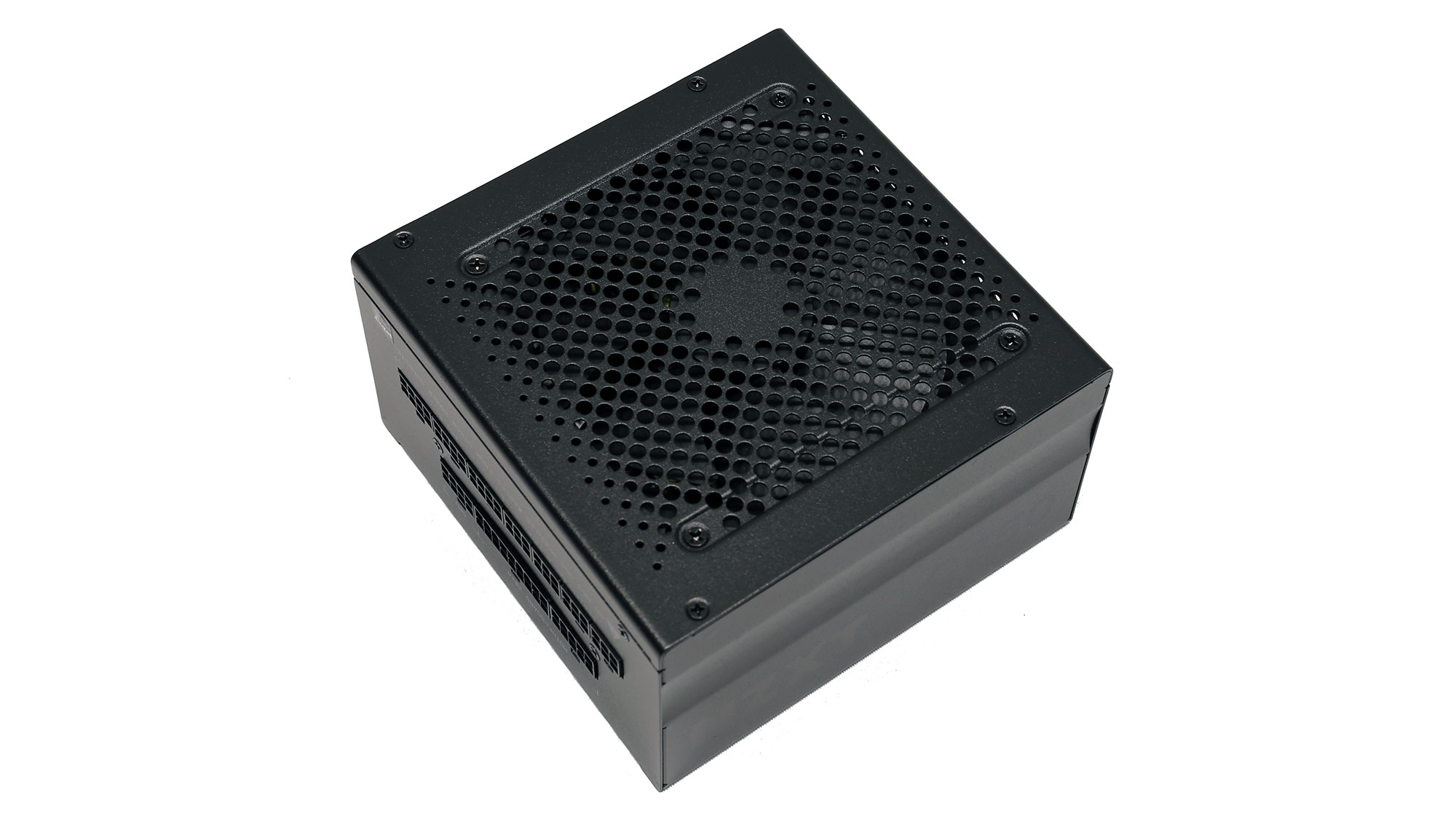



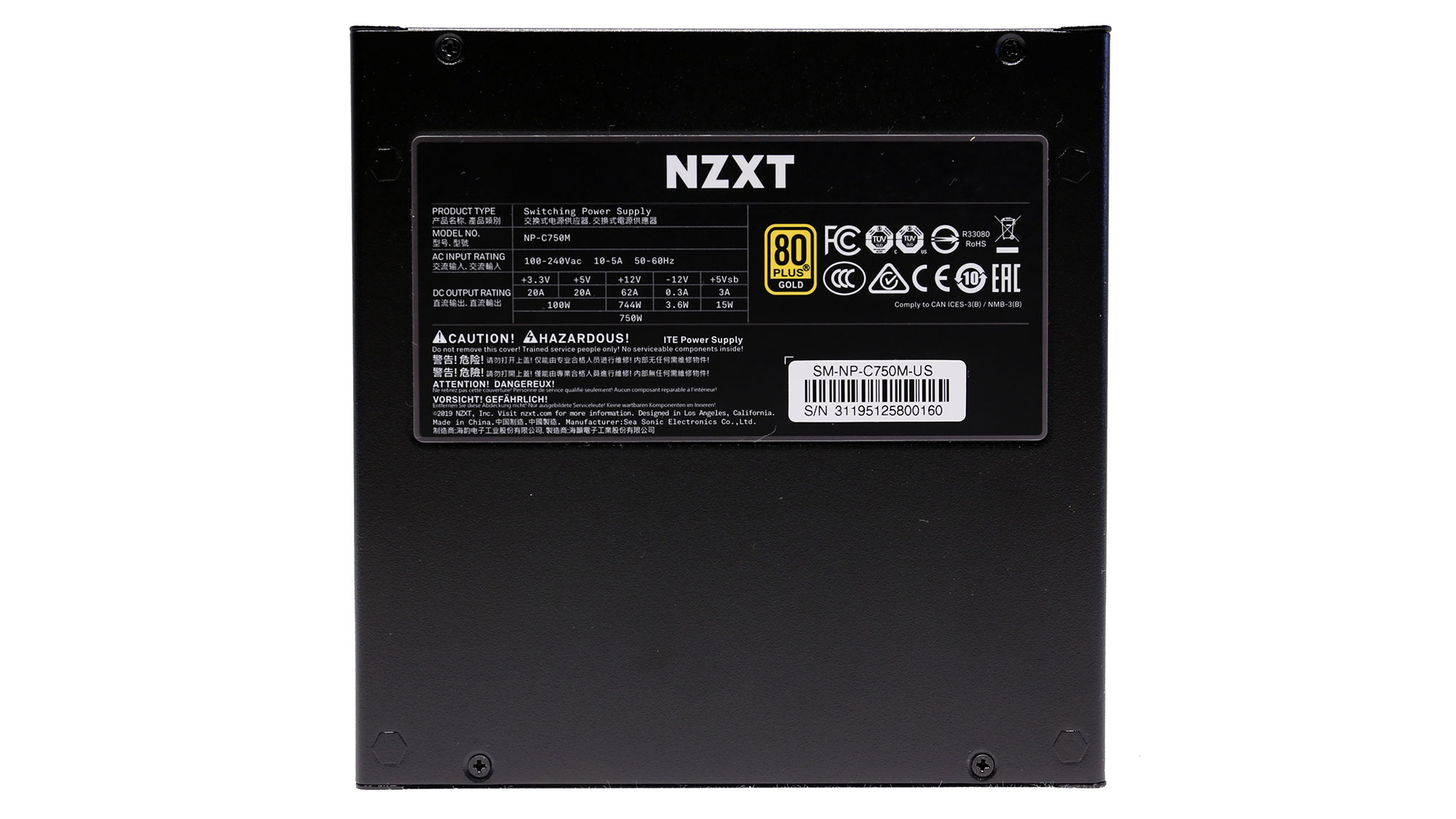



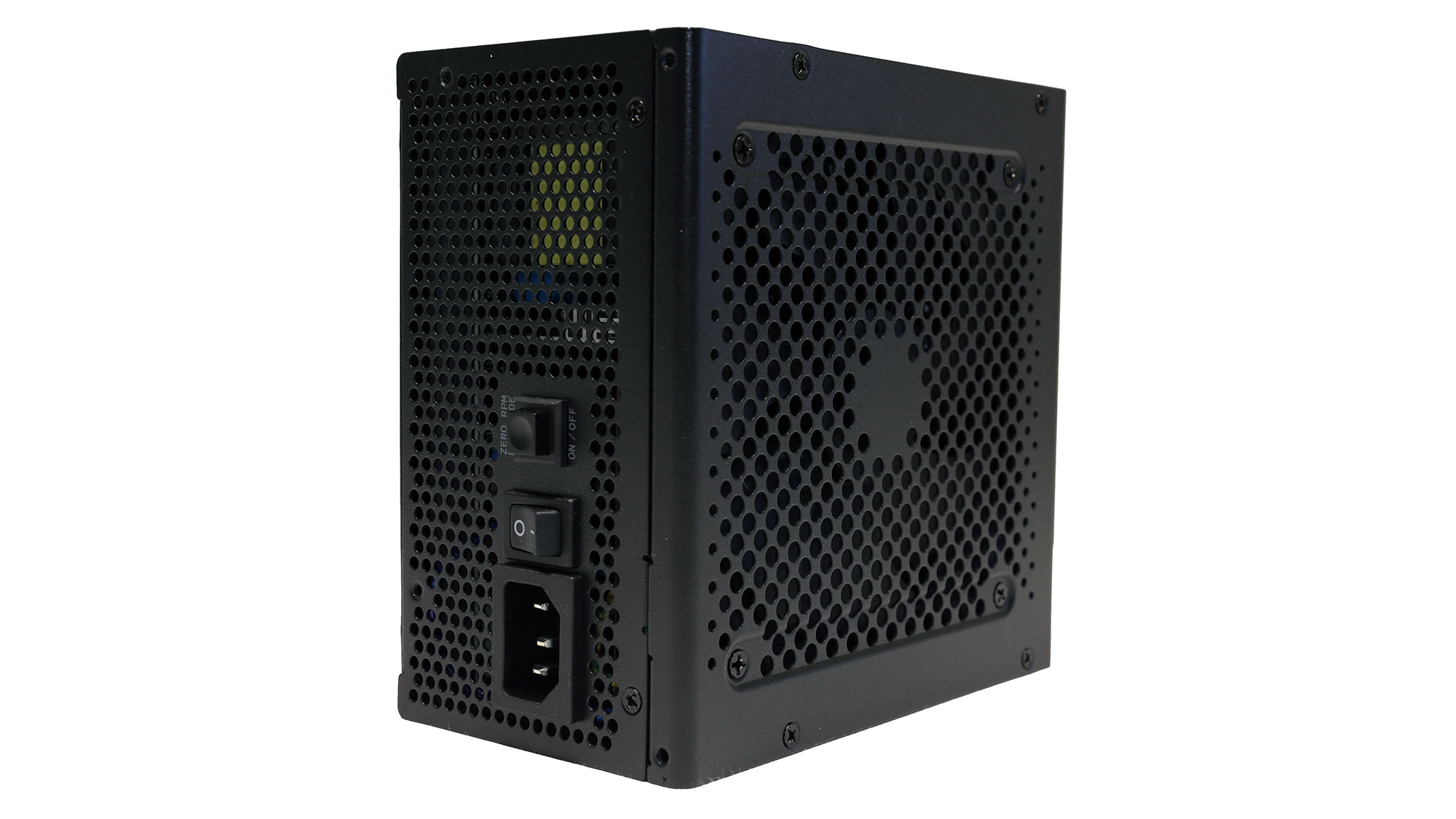


Like its siblings, the C750 uses the same platform as the Seasonic Focus Plus Gold, so we expect good and reliable performance along with high-enough efficiency levels. This platform isn't modified, though, to allow for higher than 70% efficiency at super-light loads (2% of the PSU's max rated capacity), and it doesn't support the alternative sleep mode, which allows the system to instantly wake-up from sleep. The latter doesn't look so remarkable from the moment there are no available mainboards on the market to support the feature. Still, when you buy a new power supply, you should think long-term, because the PSU is a component you could use across several builds.
All C series models feature a fully modular cable design and have compact dimensions, thanks to 150 mm depth. The cooling fans use fluid dynamic bearings and are supported by a semi-passive operation, which turns off the fan under light loads. Users have the option to deactivate this and allow the fan to spin throughout the entire load range.

Product Photos



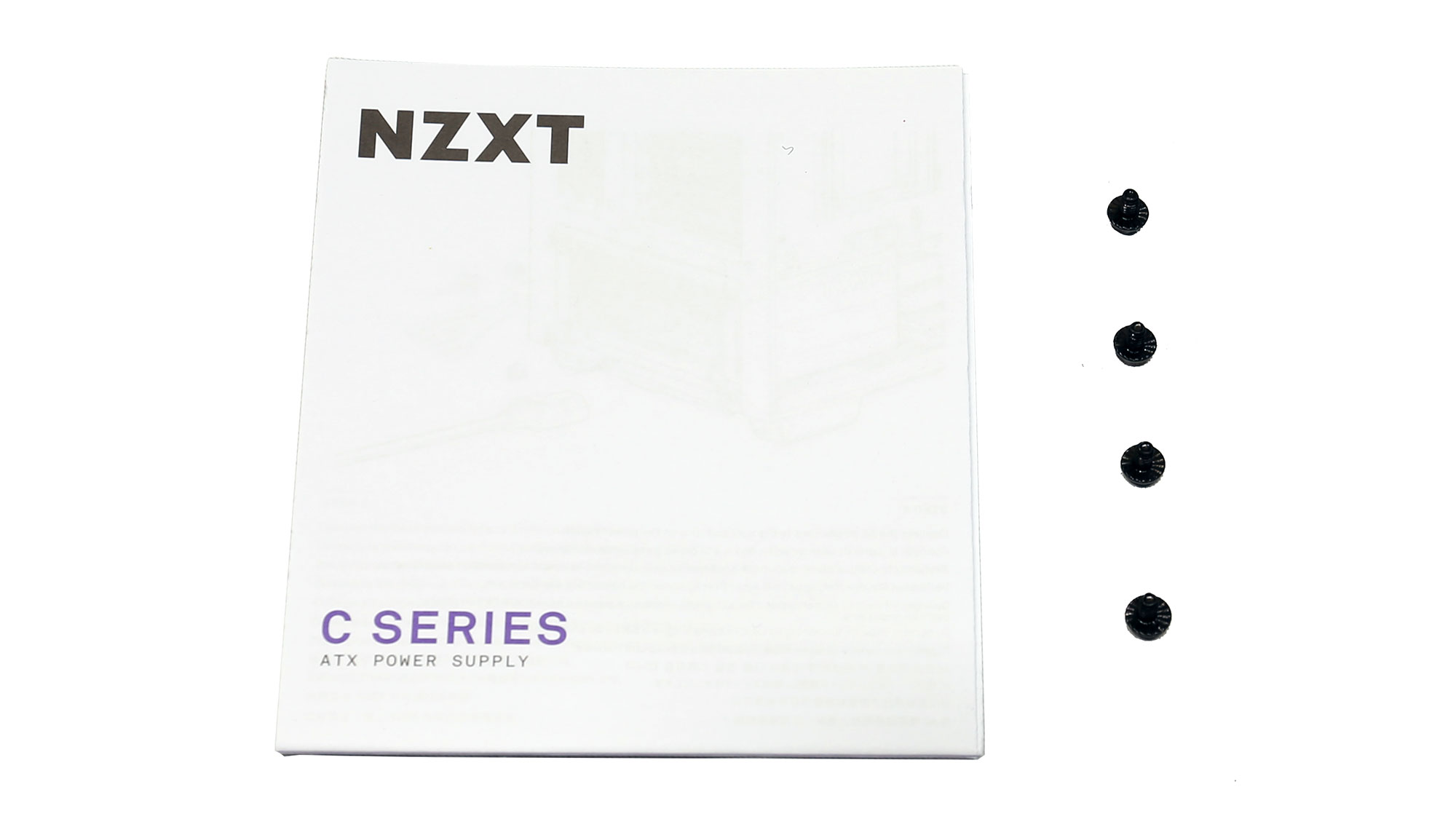

Specifications
|
Manufacturer (OEM) |
Seasonic |
|
Max. DC Output |
750W |
|
Efficiency |
80 PLUS Gold, ETA-A (88-91%) |
|
Noise |
LAMBDA-S++ (30-35 dB[A]) |
|
Modular |
✓ (Fully) |
|
Intel C6/C7 Power State Support |
✓ |
|
Operating Temperature (Continuous Full Load) |
0 - 50°C |
|
Over Voltage Protection |
✓ |
|
Under Voltage Protection |
✓ |
|
Over Power Protection |
✓ |
|
Over Current (+12V) Protection |
✓ |
|
Over Temperature Protection |
✓ |
|
Short Circuit Protection |
✓ |
|
Surge Protection |
✓ |
|
Inrush Current Protection |
✓ |
|
Fan Failure Protection |
✗ |
|
No Load Operation |
✓ |
|
Cooling |
120mm Fluid Dynamic Bearing Fan (HA1225H12F-Z) |
|
Semi-Passive Operation |
✓ (selectable) |
|
Dimensions (W x H x D) |
150 x 85 x 150mm |
|
Weight |
1.61 kg (3.55 lb) |
|
Form Factor |
ATX12V v2.4, EPS 2.92 |
|
Warranty |
10 Years |
Power Specifications
| Rail | 3.3V | 5V | 12V | 5VSB | -12V | |
|---|---|---|---|---|---|---|
| Max. Power | Amps | 20 | 20 | 62 | 3 | 0.3 |
| Watts | 100 | 744 | 15 | 3.6 | ||
| Total Max. Power (W) | 750 |
Cables & Connectors
| Modular Cables | Cable Count | Connector Count (Total) | Gauge | In Cable Capacitors |
|---|---|---|---|---|
| ATX connector 20+4 pin (610mm) | 1 | 1 | 18-22AWG | Yes |
| 4+4 pin EPS12V (650mm) | 1 | 1 | 18AWG | Yes |
| 6+2 pin PCIe (680mm+80mm) | 2 | 4 | 18AWG | Yes |
| SATA (500mm+100mm+100mm+100mm) | 2 | 8 | 18AWG | No |
| 4-pin Molex (500+100mm+100mm) | 2 | 6 | 18AWG | No |
| AC Power Cord (1400mm) - C13 coupler | 1 | 1 | 16AWG | - |
Our sample came with only one EPS connector, but according to NZXT's PR, all C650 and C750 will be equipped from now on with a second EPS cable, raising the number of corresponding connectors to two. Thanks to the vast increase of cores in modern CPUs, a pair of EPS connectors is required in all high-end mainboards.
Each of the two cables host a pair of PCIe connectors. The length of the PCIe cables is notable. Usually, these cables are shorter than the EPS one(s). Finally, there are plenty of peripheral connectors, but the distance between them is too short at 100 mm. Lastly, the inclusion of inline caps in the ATX, EPS, and PCIe cables can be a problem during cable management.

Cable Photos



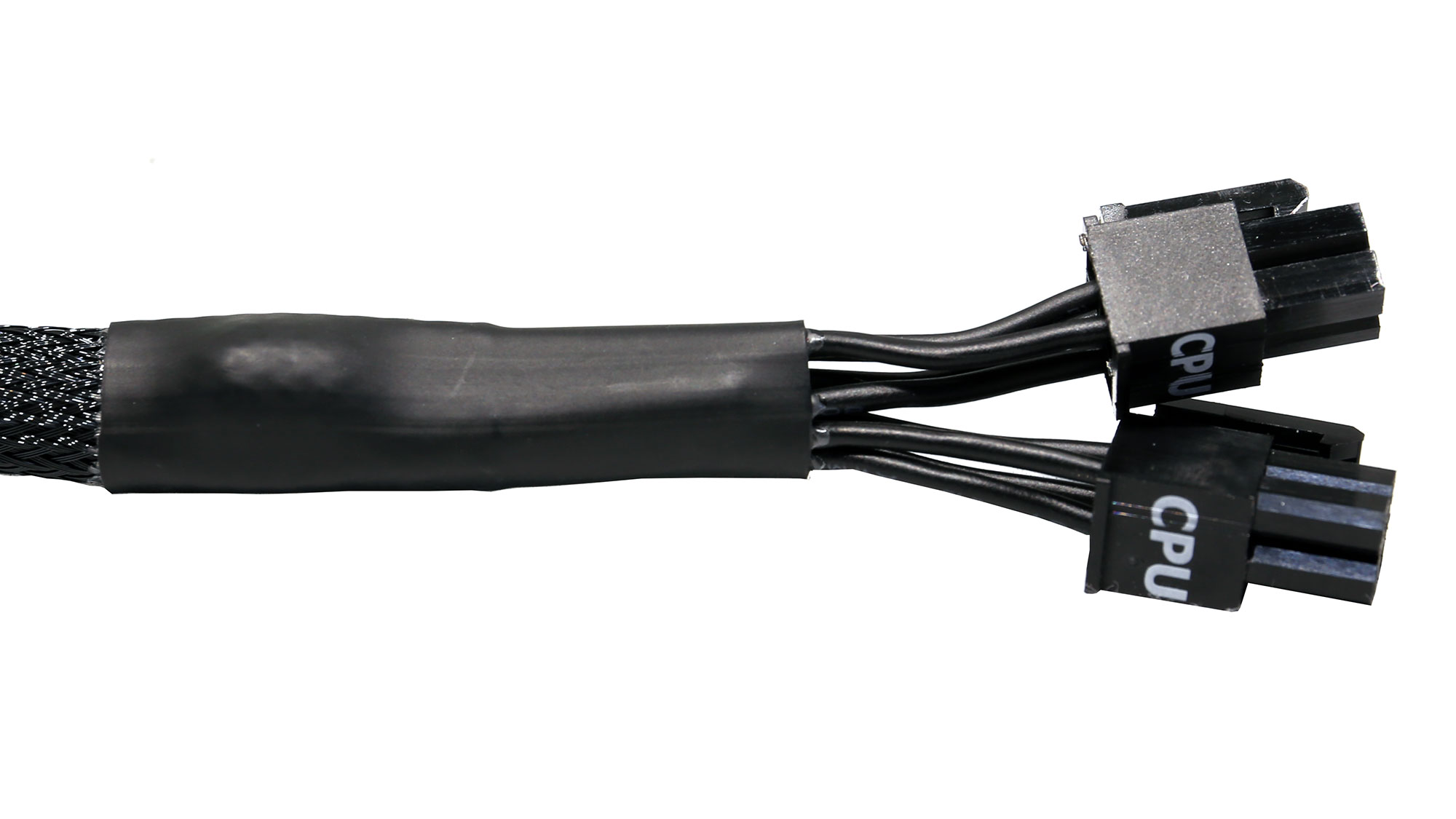




Component Analysis
We strongly encourage you to have a look at our PSUs 101 article, which provides valuable information about PSUs and their operation, allowing you to better understand the components we're about to discuss.
Get Tom's Hardware's best news and in-depth reviews, straight to your inbox.
| General Data | |
| Manufacturer (OEM) | Seasonic |
| PCB Type | Double Sided |
| Primary Side | |
| Transient Filter | 4x Y caps, 2x X caps, 2x CM chokes, 1x MOV, 1x Champion CM02X (Discharge IC) |
| Inrush Protection | NTC Thermistor (MF72-5D15M) & Relay |
| Bridge Rectifier(s) | 2x GBU1508 (800V, 15A @ 100°C) |
| APFC MOSFETs | 2x Infineon IPA60R180P7S (650V, 11A @ 100°C, Rds(on): 0.18Ohm) |
| APFC Boost Diode | 1x STMicroelectronics STTH8S06 (600V, 8A @ 25°C) |
| Bulk Cap(s) | 1x Nippon Chemi-Con (400V, 560uF, 2,000h @ 105°C, KMR) |
| Main Switchers | 4x Great Power GPT10N50AD (500V, 9.7A, Rds(on): 0.7Ohm) |
| APFC Controller | Champion CM6500UNX |
| Resonant Controller | Champion CM6901T6X |
| Topology | Primary side: APFC, Full-Bridge & LLC converter Secondary side: Synchronous Rectification & DC-DC converters |
| Secondary Side | |
| +12V MOSFETs | 4x Nexperia PSMN2R6-40YS (40V, 100A @ 100°C, Rds(on): 5.3mOhm @ 175°C) |
| 5V & 3.3V | DC-DC Converters: 6x Infineon BSC0906NS (30V, 40A @ 100°C, 4.5mΩ) PWM Controller: ANPEC APW7159 |
| Filtering Capacitors | Electrolytic: 2x Nippon Chemi-Con (105°C, W), 6x Nippon Chemi-Con (1-5,000h @ 105°C, KZE), 4x Nippon Chemi-Con (4-10,000h @ 105°C, KY), 2x Rubycon (3-6,000h @ 105°C, YXG) Polymer: 8x Chemi-Con, 3x FPCAP, 6x NIC |
| Supervisor IC | Weltrend WT7527V (OCP, OVP, UVP, SCP, PG) |
| Fan Model | Hong Hua HA1225H12F-Z (120mm, 12V, 0.58A, 2200 RPM, Fluid Dynamic Bearing) |
| 5VSB Circuit | |
| Rectifier | 1x MCC MBR1045ULPS SBR (45V, 10A @ 90°C) |
| Standby PWM Controller | Excelliance MOS EM8569 |
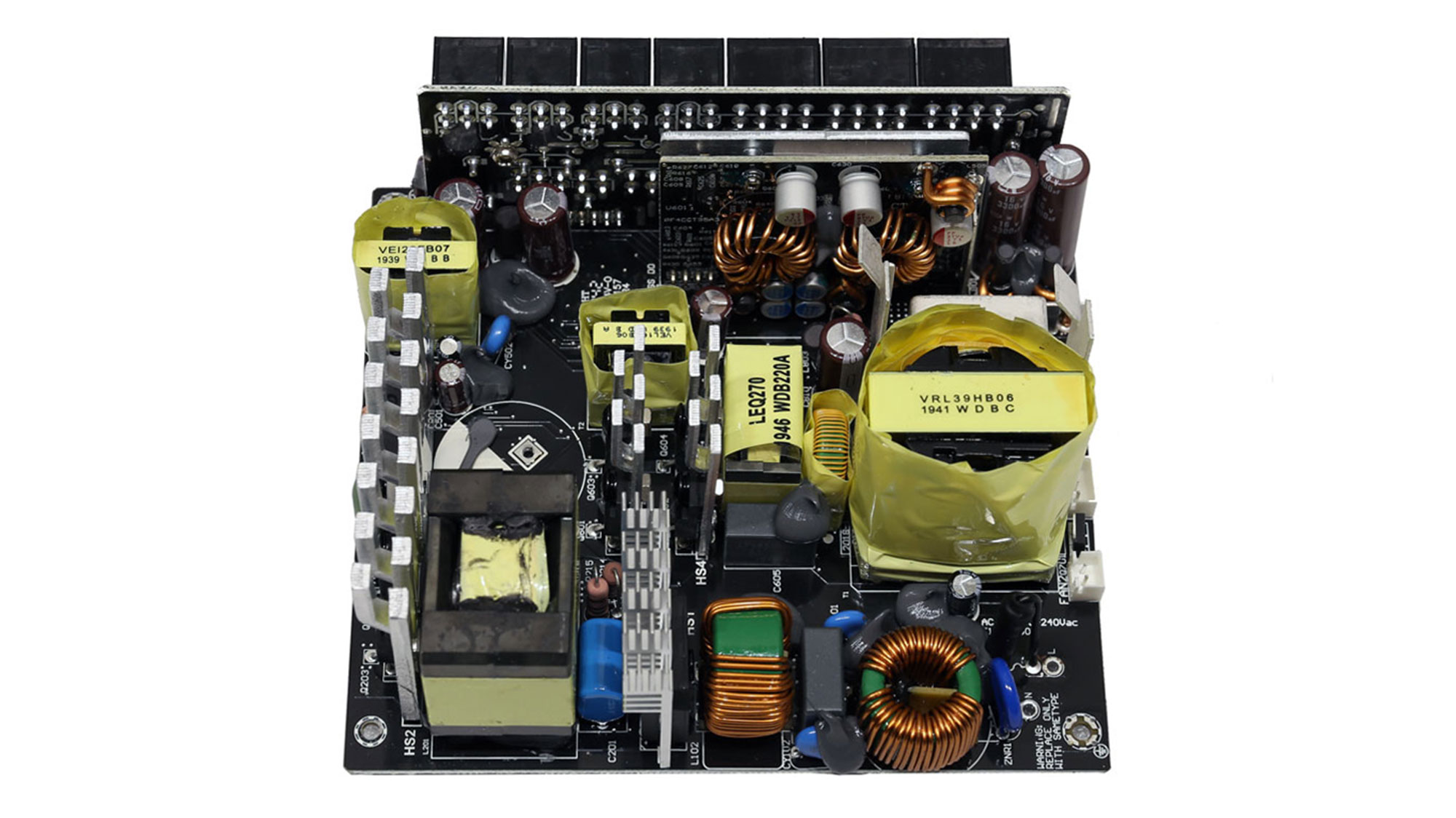
Overall Photos



We have seen this platform numerous times so far. Besides the highly popular Focus models, Seasonic also provides this platform to several large brands. The design is up to date, and for increased efficiency and high power handling, Seasonic uses a full-bridge topology on the primary side, which is supported by an LLC resonant converter. On the secondary side, we meet the usual stuff: synchronous rectification where FETs regulate the 12V rail and a pair of VRMs for generating the minor rails. To keep the cost down, Seasonic used Great Power FETs as primary switchers instead of more expensive Infineons. Nonetheless, less stress is applied to the main FETs because of the full-bridge topology. No expense was spared in the other parts of this power supply, with the only exception the Chemi-Con KZE caps, which are not as good as the KY ones.

Transient filter





The transient filter is complete. Still, its performance is not among the best we have seen.

Bridge rectifiers
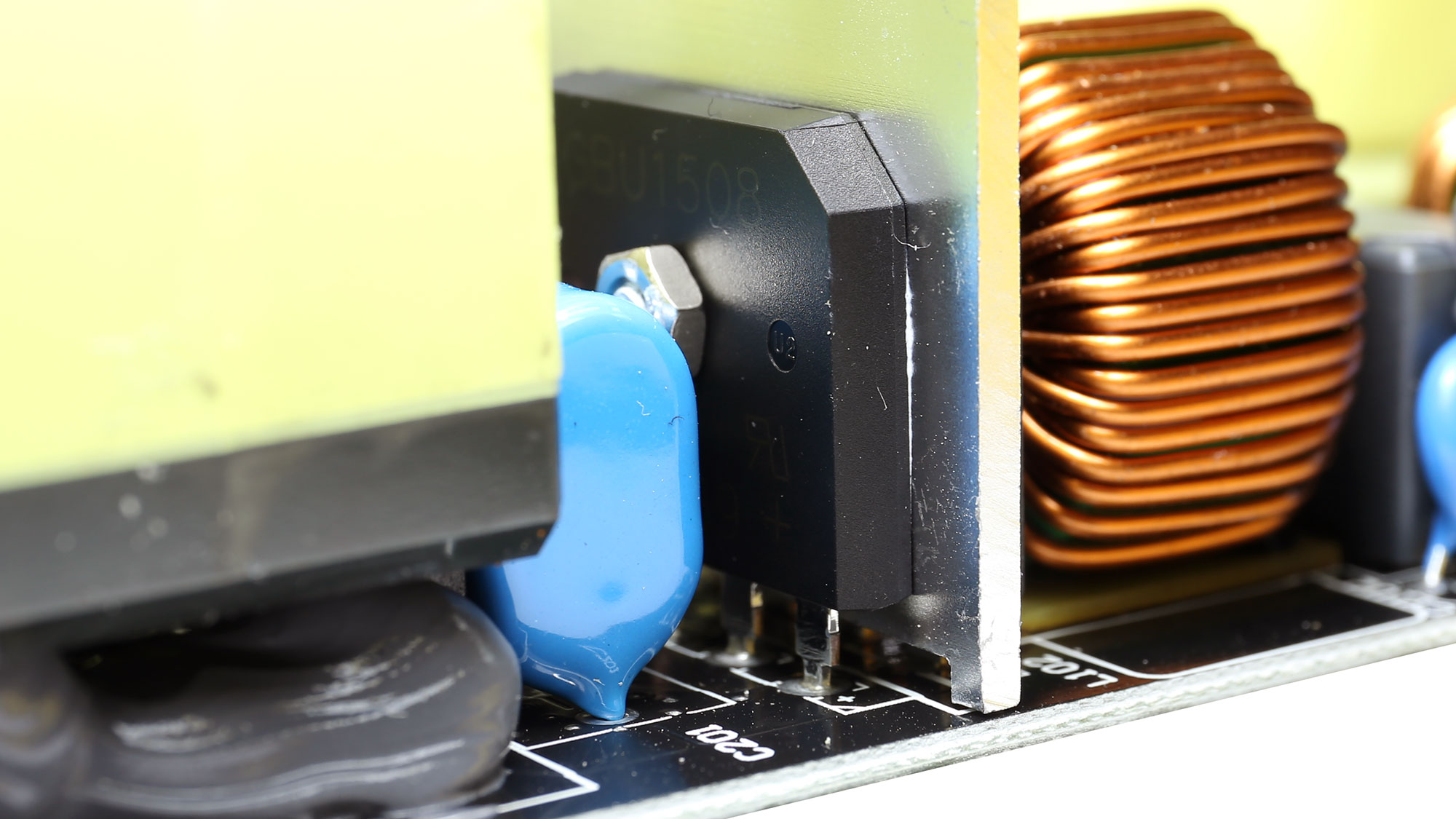
The pair of bridge rectifiers can handle up to 30A of current, combined.

APFC converter
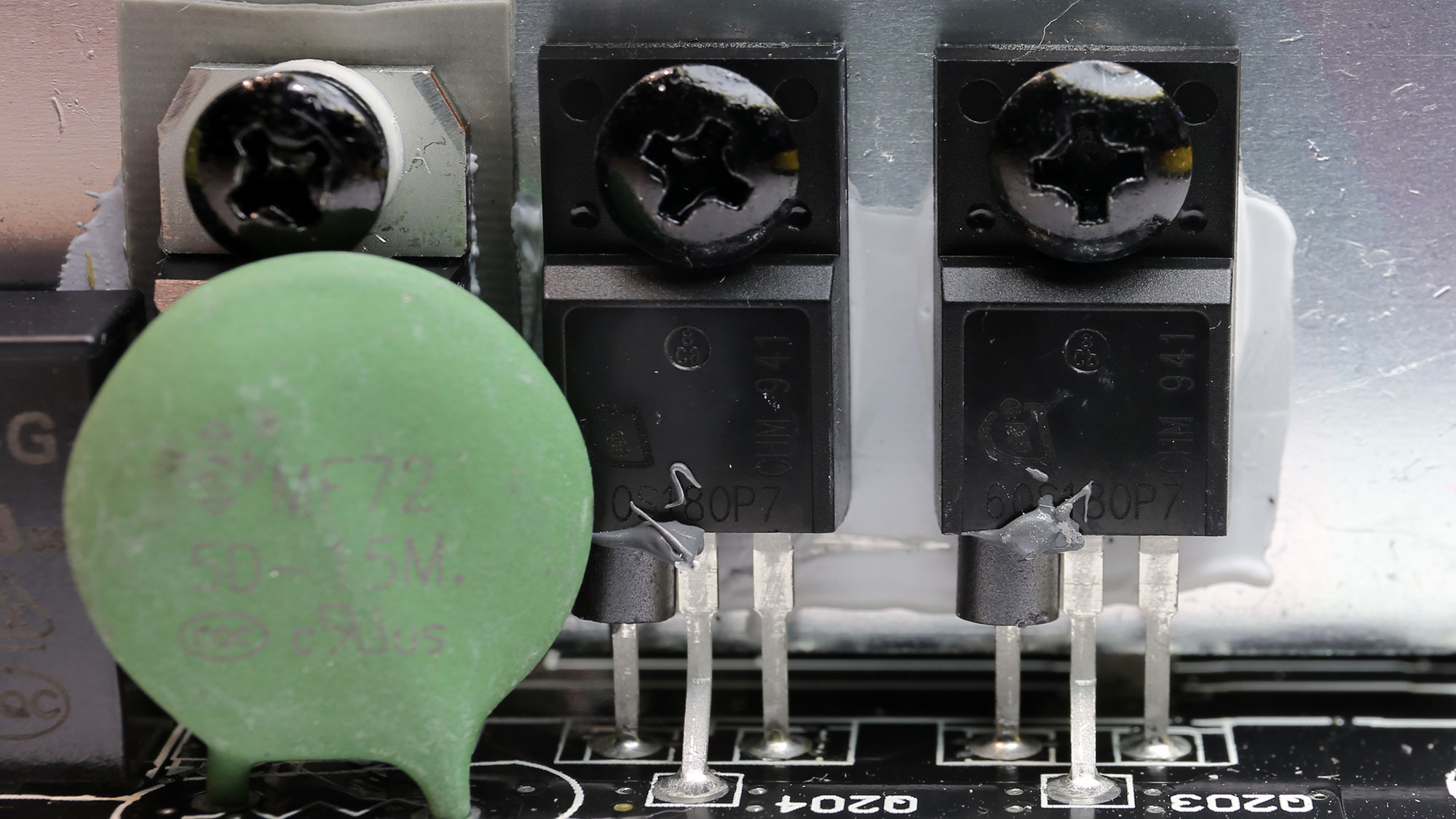


The APFC converter uses two Infineon FETs and a single boost diode, provided by STMicroelectronics, which is strong enough to handle this PSU's needs. The bulk cap is provided by Chemi-Con and has enough capacity to allow for a much longer than 17ms, hold-up time.

Main FETs and primary transformer
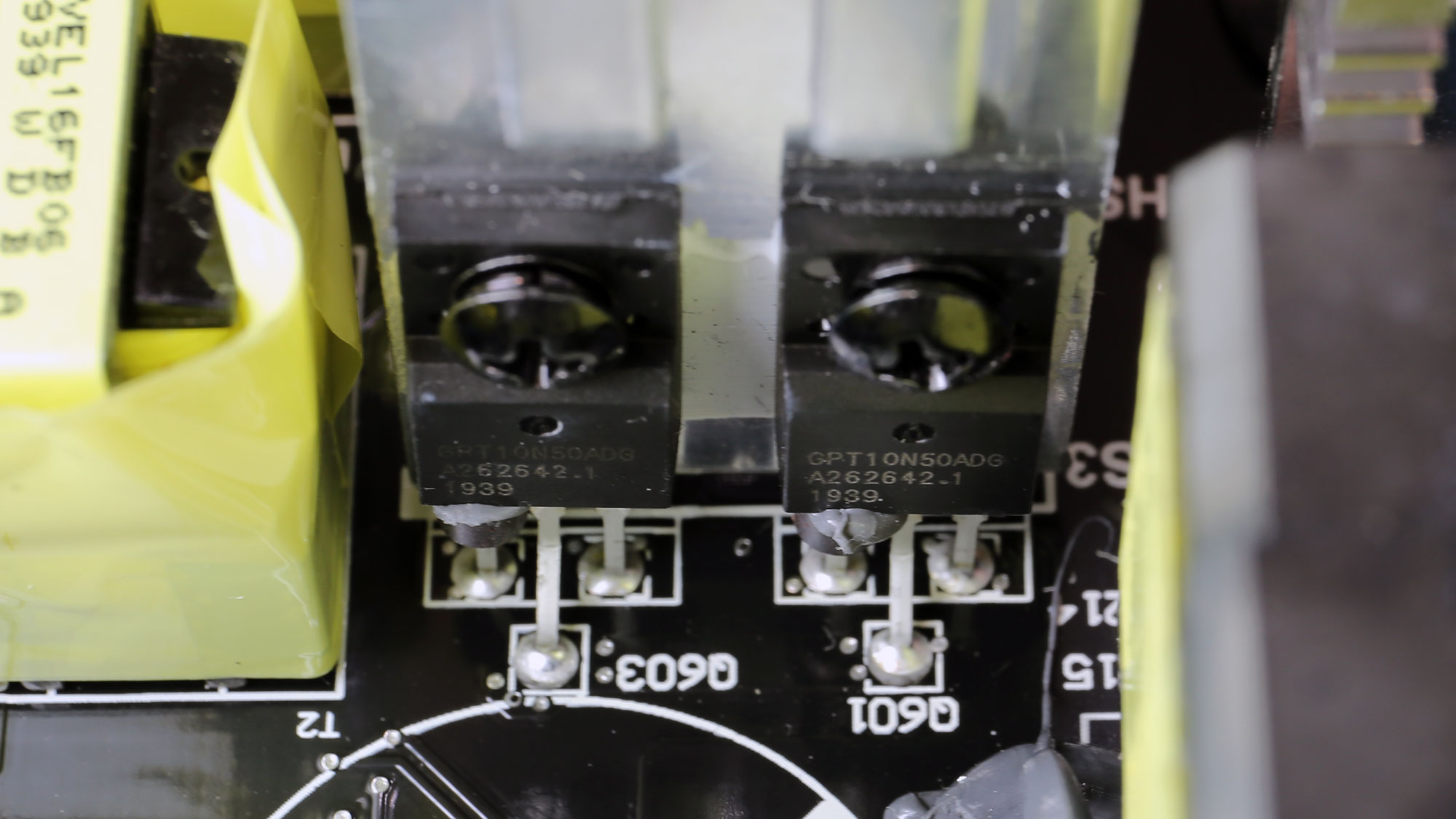



Four switching FETs are installed in a full-bridge topology. Although this topology is considered an expensive option, you can save money since the FETs take less stress, so that you can use lower quality ones compared to a similar spec half-bridge topology. We recently saw this in our DeepCool GamerStorm DQ-M V2L 850W review.

12V FETs and VRMs


Four Nexperia FETs handle the 12V rail, while a pair of DC-DC converters generate the minor rails. These converters use six Infineon FETs, and the common PWM controller is provided by Anpec.

Filtering caps

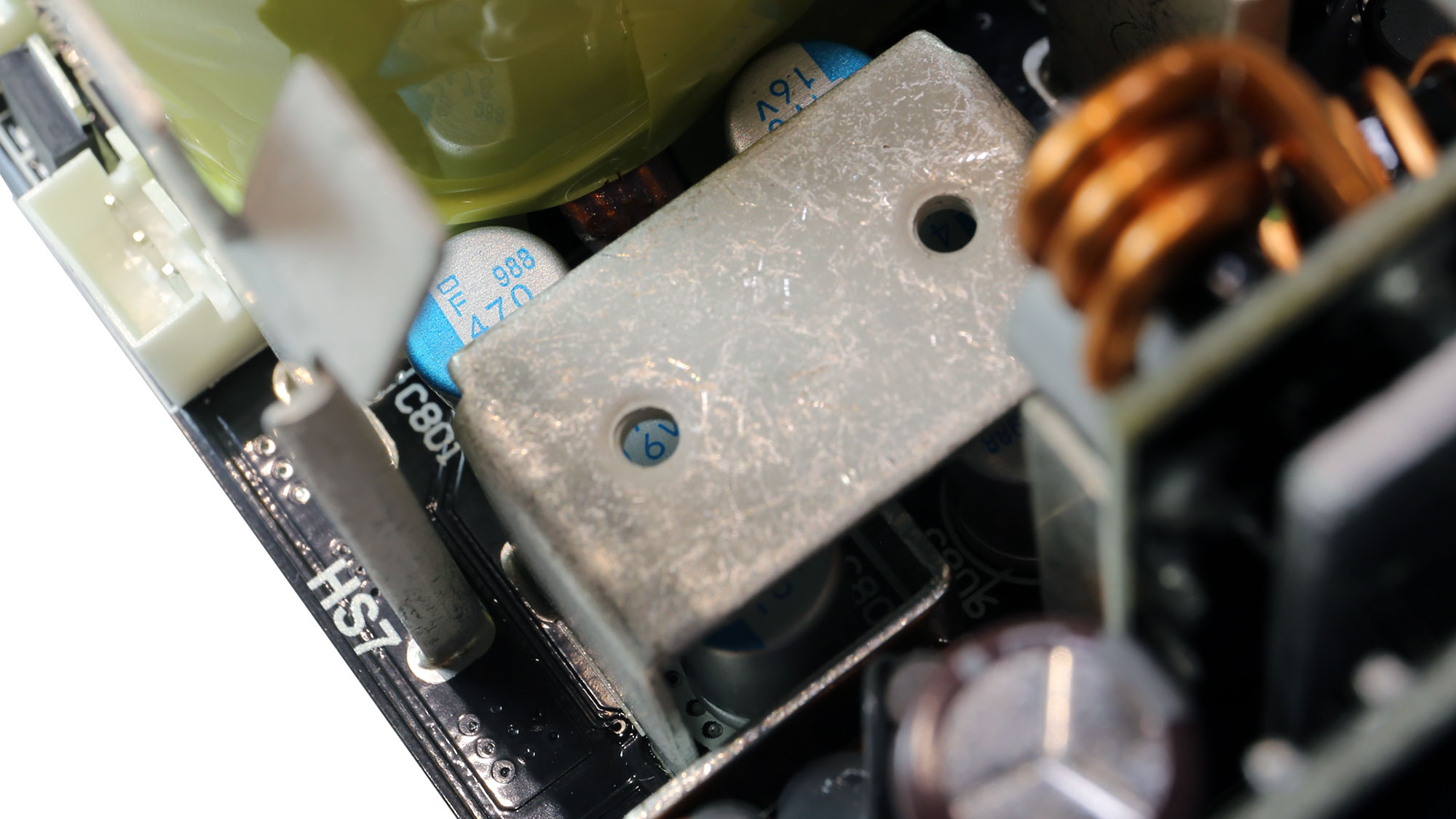
The Chemi-Con KZE caps don't have such a high life but are usually met in good power supplies, and if they are combined with other, higher quality caps, they don't bring any trouble in the long run. Besides the KZE caps, we also find W, KY, and two Rubycons (YXG). Many polymer caps are also used for ripple filtering purposes.
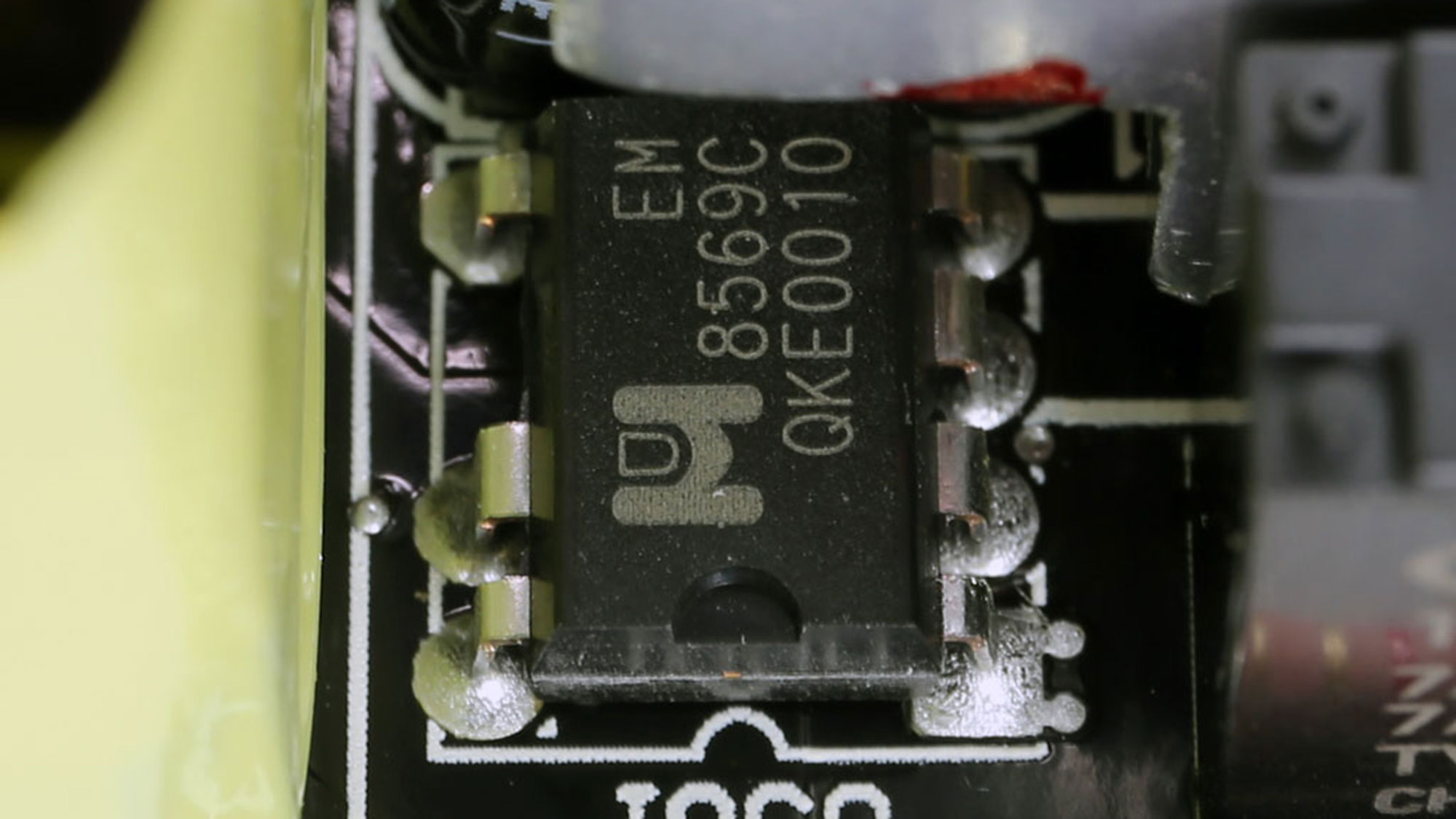
5VSB Circuit


The 5VSB circuit's PWM controller is an Excelliance MOS EM8569. On the secondary side of this circuit, a Schottky Barrier Diode (SBR) is used, so inevitably efficiency will take a hit.

Modular board front


Several polymer caps are installed at the front side of the modular board. There are empty spots for several more, as you can see in the photos above.

Soldering quality
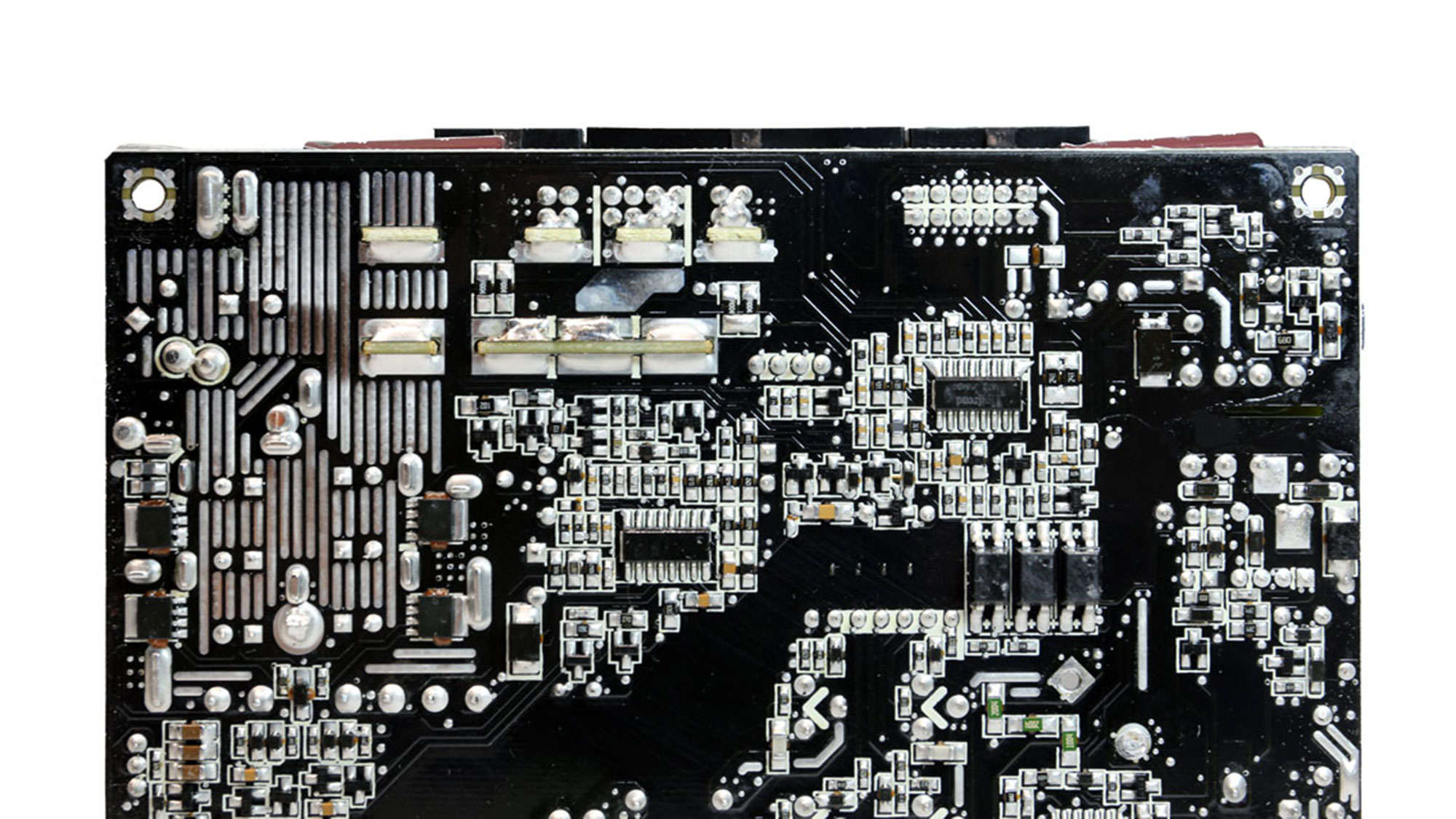



As usual, we don't have any complaints from Seasonic's manufacturing quality.

Cooling fan


Hong Hua dominates the PSU fan market nowadays since it manages to deliver good quality and performance at affordable prices. It is nice to see FDB fans everywhere instead of low-quality sleeve bearing fans.
MORE: Best Power Supplies
MORE: How We Test Power Supplies
MORE: All Power Supply Content
Current page: Specifications and Part Analysis
Next Page Load Regulation, Hold-Up Time, Inrush Current, Efficiency and Noise
Aris Mpitziopoulos is a contributing editor at Tom's Hardware, covering PSUs.
-
Avro Arrow Nice-looking PSU. The only problem is that these days, people don't know which way to turn with all of these re-branded PSUs. As you stated, this is the same as the SeaSonic, which makes it good, but there are so many good PSUs that the market is just saturated. Names like EVGA, Antec, Corsair, and Be Quiet! are all top-tier and well-respected names.Reply
Then in the second tier you get names like Cooler Master, Thermaltake, Gigabyte and ASUS. This NZXT could easily get lost in the mix. -
E-Bert a bit late but a question about the noise level, it says 33 decibels average across usage, but if im only using say 550W max load is it ever going to hit that 33 decibels? its the only thing stopping me from picking one up at the momentReply